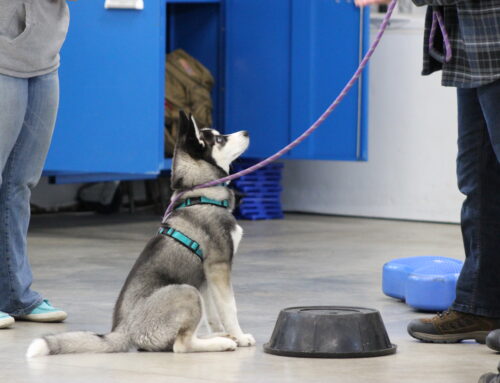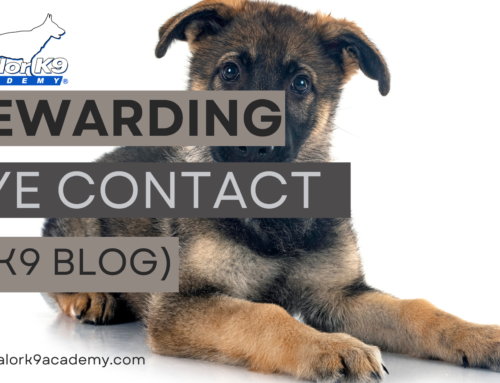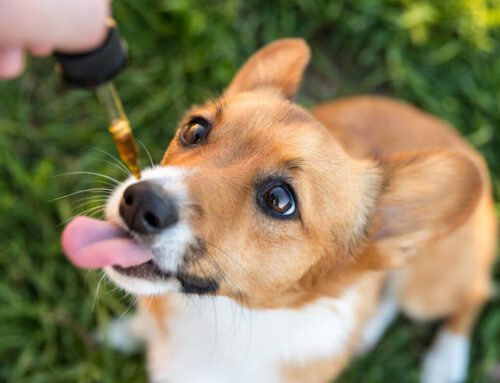There’s a lot more to dog breeds than looks and size. While every dog has his own personality traits and quirks, you can learn a lot about what to expect from a dog by his breed. Breed influences everything from energy levels to trainability, temperament and lifestyle requirements – in other words, the important stuff that will determine whether a particular dog breed is the right fit for you and your family.
There is really no one “best” breed – ultimately, the right breed for you depends on what you’re looking for in a four-legged pal. Whether you’re wanting to purchase a purebred or rescue a mutt, here are some important factors to consider in finding the right dog breed or mixed breed for you:
Evaluate your own energy level
When selecting a breed, it’s vitally important to take into account how that dog’s energy will harmonize with your own. Take some time for  self-reflection and examine your lifestyle. Do you wake up early and go for a run in the mountains? Or do you hit snooze and roll out of bed just in time for work? Make an honest assessment of just how active you really are – not how active you plan to be – and choose a breed whose energy level matches what you have to offer.
self-reflection and examine your lifestyle. Do you wake up early and go for a run in the mountains? Or do you hit snooze and roll out of bed just in time for work? Make an honest assessment of just how active you really are – not how active you plan to be – and choose a breed whose energy level matches what you have to offer.
Energy requirements vary greatly from breed to breed. A breed that was bred to work, like the German Shepherd for example, won’t be very happy if you live a sedentary lifestyle. Conversely, don’t expect a Basset Hound to want to join you on your morning jogs. When energy levels conflict, both dogs and owners end up frustrated and that frustration can lead to tension and behavior issues with dramatic repercussions. Keep in mind that energy levels within a breed vary greatly as well so once you select the right breed, you must also pick the right dog within that breed.
High or Low Maintenance?
Before you pick a dog breed because you think it’s “cute” or “fashionable,” pause to think about what kind of upkeep that breed requires. Afghan Hounds and Bichon Frises require regular grooming to keep their gorgeous manes looking good. German Shepherds and Border Collies need to be brushed regularly to keep their locks of love out of your morning coffee. If you want a particular breed but don’t want to deal with shedding, look for designer breeds like the hypoallergenic Newfypoo (Newfoundland x Poodle cross).
Consider how much time and money you’re willing to commit to brushing, grooming and vacuuming. This will help you decide whether you’re okay with a high maintenance and/or high shedding dog or if you’re better suited to one that’s easier to maintain.
Pup per Square Foot
Different breeds have different space requirements – but not always in the way you think. Many people incorrectly assume that smaller breeds are fine in smaller spaces and that larger dogs require big houses with fenced-in yards. That’s not always the case. Large breeds like Greyhounds and Mastiffs get along just fine in apartments whereas some teacup Yorkshire Terriers might need daily runs to burn off their energy.
in smaller spaces and that larger dogs require big houses with fenced-in yards. That’s not always the case. Large breeds like Greyhounds and Mastiffs get along just fine in apartments whereas some teacup Yorkshire Terriers might need daily runs to burn off their energy.
Look at your existing living quarters, the amount of room you have available and where you live (urban vs rural) to help narrow down your list of potential dog breeds.
All in the Family
The perfect fit for your family depends largely on whom your family consists of. For instance, certain breeds do particularly well with little kids (hello, Saint Bernard!) whereas others may want to chase them (stop that, Border Collie!). If you already have a dog, make sure he’s obedient and well-socialized before you add another furry member to your pack. And please don’t get a new puppy because the dog you have now is bored and you think he wants a playmate. If you don’t have time for one dog, you don’t have time for two.
Training Wheels
You might be excited at the prospect of teaching your future dog some very elaborate tricks, or you might be completely indifferent about whether he  does much beyond the basics. Some dogs pick up on things quickly, while others require a ton of patience and practice. Some dogs are stubborn while others love to learn. Find your happy medium. Either way, it’s a good idea to enroll in training right away to jumpstart the relationship you have with your dog and set yourselves up for success.
does much beyond the basics. Some dogs pick up on things quickly, while others require a ton of patience and practice. Some dogs are stubborn while others love to learn. Find your happy medium. Either way, it’s a good idea to enroll in training right away to jumpstart the relationship you have with your dog and set yourselves up for success.
Meet the Candidates
After you’ve narrowed down the list of options, get out there and find dogs that match the breed(s) you’ve selected. Go to dog shows. Talk with breeders. Hang out at the dog park. Researching dog breeds is important, but there’s nothing better than hands-on experience. If you’re 99% sure you want a Doberman, find a local Doberman Pinscher Rescue and sign up to foster a dog or watch your friend’s dog for a few days while they’re out of town. Think of it as a test drive before signing on the dotted line.
Dream Dog
Everybody has a different idea of what makes a dream dog. For some, it’s a loyal best friend who will indulge in Netflix marathons with you. For others, it’s a loyal best friend that will indulge in marathon training runs with you. Determine what you look for in a dog – a lap dog, a running buddy, a family pet – and use it as a guide for choosing the right breed for you.
When in doubt, ask for help! Reach out to professional dog trainers, reputable breeders and rescue organizations. Tell them what you’re looking for and let them help you find your perfect match.

My husband Justin and I are the proud owners of three German Shepherds and two Australian Shepherds. They’re perfect for our active lifestyle, and we wouldn’t trade them for the world!







Good tips on how to pick the best breed. Thank you so much!
You’re welcome, Lawrence! Sorry for the delayed reply. Hope you found the perfect breed for you!
I agree that you need to consider the pup per square foot when choosing a dog. Finding out how much space a dog breed needs before choosing them would be really helpful. My husband and I just bought a house with a big yard and we’re looking for a good dog for our family. When we choose them, we’ll have to find one that will really enjoy running around in our yard.
Thanks, Hannah! Keep in mind too, that while dogs usually head outside and check the perimeter right away, most dogs don’t run around the yard when they’re alone (unless they’re getting into trouble). Our dogs wait right at the gate for us to come outside and play WITH THEM in our yard. So the size of the yard has to be big enough to enjoy together, since your dog likely won’t be getting much exercise alone. Congrats on buying a home. Hope you found the perfect dog for you! -Amy
It blew my mind to know that small dogs can’t necessarily have small spaces. My aunt has a teeny dog that has an insane amount of energy and I didn’t think about it until just now. This is good to know for my small yard.
Hi Randy! So glad to hear you found this post to be helpful. There are some small dogs out there who love to work and need space to run. And on the flip side, there are lots of big, lazy large breed dogs who are happiest when couch potatoes. Thanks for chiming in! -Amy